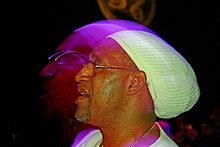Old-school hip hop is the earliest commercially recorded hip hop music and the original style of the genre. It typically refers to the music created around 1979 to 1983, as well as any hip hop that does not adhere to contemporary styles.
The new school of hip hop was a movement in hip hop music, beginning in 1983–84 with the early records of Run–D.M.C., Whodini, and LL Cool J. Predominantly from Queens and Brooklyn, it was characterized by drum machine-led minimalism, often tinged with elements of rock; rapped taunts, boasts, and socio-political commentary; and aggressive, self-assertive delivery. In song and image, its artists projected a tough, cool, street b-boy attitude. These elements contrasted sharply with funk and disco, novelty hits, live bands, synthesizers, and party rhymes of artists prevalent in the early 1980s. Compared to their older hip hop counterparts, new school artists crafted more cohesive LPs and shorter songs more amenable to airplay. By 1986, their releases began to establish hip hop in the mainstream.

Fred Brathwaite, more popularly known as Fab 5 Freddy, is an American visual artist, filmmaker, and hip hop pioneer. He is considered one of the architects of the street art movement. Freddy emerged in New York's downtown underground creative scene in the late 1970s as a graffiti artist. He was the bridge between the burgeoning uptown rap scene and the downtown No Wave art scene. He gained wider recognition in 1981 when Debbie Harry rapped on the Blondie song "Rapture" that "Fab 5 Freddy told me everybody's fly." In the late 1980s, Freddy became the first host of the groundbreaking hip-hop music video show Yo! MTV Raps.
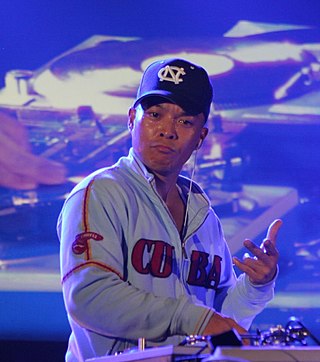
Turntablism is the art of manipulating sounds and creating new music, sound effects, mixes and other creative sounds and beats, typically by using two or more turntables and a cross fader-equipped DJ mixer. The mixer is plugged into a PA system and/or broadcasting equipment so that a wider audience can hear the turntablist's music. Turntablists typically manipulate records on a turntable by moving the record with their hand to cue the stylus to exact points on a record, and by touching or moving the platter or record to stop, slow down, speed up or, spin the record backwards, or moving the turntable platter back and forth, all while using a DJ mixer's crossfader control and the mixer's gain and equalization controls to adjust the sound and level of each turntable. Turntablists typically use two or more turntables and headphones to cue up desired start points on different records.

Beat Street is a 1984 American dance drama film featuring New York City hip hop culture of the early 1980s. Set in the South Bronx, the film follows the lives of a pair of brothers and their group of friends, all of whom are devoted to various elements of early hip hop culture, including breakdancing, DJing and graffiti.
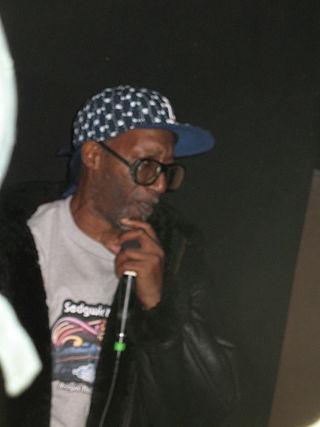
Coke La Rock is an American rapper from New York City who is sometimes credited as being the first MC in the history of hip-hop. In 2010, he was inducted into the High Times Counterculture Hall of Fame at the annual ceremonies at the Cannabis Cup in Amsterdam.
In popular music, a break is an instrumental or percussion section during a song derived from or related to stop-time – being a "break" from the main parts of the song or piece. A break is usually interpolated between sections of a song, to provide a sense of anticipation, signal the start of a new section, or create variety in the arrangement.
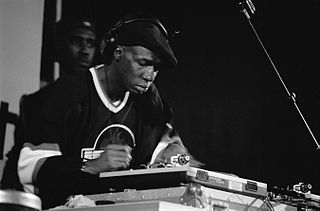
Hip hop or hip-hop is a culture and art movement that was created by African Americans, starting in the Bronx, New York City. Pioneered from Black American street culture, that had been around for years prior to its more mainstream discovery, it later reached other groups such as Latino Americans and Caribbean Americans. Hip-hop culture has historically been shaped and dominated by African American men, though female hip hop artists have contributed to the art form and culture as well. Hip hop culture is characterized by the key elements of rapping, DJing and turntablism, and breakdancing; other elements include graffiti, beatboxing, street entrepreneurship, hip hop language, and hip hop fashion. From hip hop culture emerged a new genre of popular music, hip hop music.

Frederick Crute, known professionally as Kool DJ Red Alert, is an Antiguan-American disc jockey who rose to fame on WRKS 98.7 Kiss FM in New York City and is recognized as one of the founding fathers of hip hop music and culture. His weekly radio show airs on WBLS 107.5 FM from Monday to Saturday at 6pm EST.
Paul Winley Records Inc. was a doo-wop record label founded in 1956 that, in 1979, became one of the earliest hip hop labels. It was situated on 125th Street, Harlem, New York City. Winley released doo-wop by The Paragons and The Jesters, and hip hop records by Paul Winley's daughters, Tanya and Paulette, produced by Winley's wife, Ann. The label can lay claim to a number of firsts: one of the earliest rock and roll compilations, one of the earliest breaks compilations, an early solo female rap artist and an early instance of social commentary in rap. Winley was also the first label to record one of hip hop's most important figures, Afrika Bambaataa.
Hip-hop or hip hop music, also known as rap, and formerly as disco rap, is a genre of popular music that originated in the early 1970s from African Americans and Afro-Caribbean immigrants in the Bronx, a borough of New York City. Hip-hop music originated as an anti-drug and anti-violence genre consisting of stylized rhythmic music that often accompanies rapping, a rhythmic delivery of poetic speech. In the early 1990s, a professor of African American studies at Temple University said, "hip hop is something that blacks can unequivocally claim as their own." By the 21st century, the field of rappers had diversified by both race and gender. The music developed as part of the broader hip hop culture, a subculture defined by four key stylistic elements: MCing/rapping, DJing/scratching with turntables, breakdancing, and graffiti art. While often used to refer solely to rapping and rap music, "hip hop" more properly denotes the practice of the entire subculture. The term hip hop music is sometimes used synonymously with the term rap music, though rapping is not a required component of hip hop music; the genre may also incorporate other elements of the culture, including DJing, turntablism, scratching, beatboxing, and instrumental tracks.

Lance Taylor, also known as Afrika Bambaataa, is an American DJ, rapper, and producer from the South Bronx, New York. He is notable for releasing a series of genre-defining electro tracks in the 1980s that influenced the development of Hip Hop culture. Afrika Bambaataa is one of the originators of breakbeat DJing.
The Hip Hop Years is a three part series of one hour television documentaries, made for Channel 4 in 1999. It was accompanied by a book and compilation CD.

Sedgwick Avenue is a major street in the Bronx, New York City. It runs roughly parallel to Jerome Avenue, the Major Deegan Expressway, and University Avenue. Sedgwick Avenue is one of the longest streets in the western part of the Bronx, running from Mosholu Parkway at the north to Macombs Dam Bridge at its southern end, about 800 feet west of Yankee Stadium.

Joseph Robert Saddler, popularly known by his stage name Grandmaster Flash, is a Barbadian-American DJ, rapper and producer. He created a DJ technique called the Quick Mix Theory. This technique serviced the break-dancer and the rapper by elongating the drum breaks through the use of duplicate copies of vinyl. This technique gave birth to cutting and scratching. It also gave rappers better music with a seamless elongated bed of beats to speak on. He also invented the slipmat.

The history of hip-hop dances encompasses the people and events since the late 1960s that have contributed to the development of early hip-hop dance styles, such as uprock, breaking, locking, roboting, boogaloo, and popping. African Americans created uprock and breaking in New York City. African Americans in California created locking, roboting, boogaloo, and popping—collectively referred to as the funk styles. All of these dance styles are different stylistically. They share common ground in their street origins and in their improvisational nature of hip hop.

1520 Sedgwick Avenue is a 102-unit apartment building in the Morris Heights neighborhood of the Bronx in New York City. Described in The New York Times as a long-time "haven for working class families", it has been historically accepted as the birthplace of hip hop.
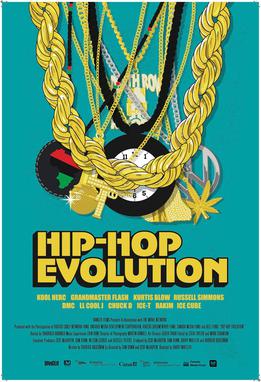
Hip-Hop Evolution is a Canadian music documentary television series that originally aired on HBO Canada in 2016. Hosted by Juno Award-winning artist Shad, the series profiles the history of hip-hop music through interviews with many of the genre's leading cultural figures. The series is produced by Darby Wheeler, Rodrigo Bascuñán, Russell Peters, Scot McFadyen, Sam Dunn and Nelson George. It won the 2016 Peabody Award, and the 2017 International Emmy Award for Best Arts Programming.
Anthony G. "Cholly Rock" Horne, is a first generation B-Boy and one of the original 11 members of the Zulu Kings, the predecessor and genesis of the Universal Zulu Nation.

The South Bronx is an area of the New York City borough of the Bronx. The area comprises neighborhoods in the southern part of the Bronx, such as Concourse, Mott Haven, Melrose, and Port Morris.
